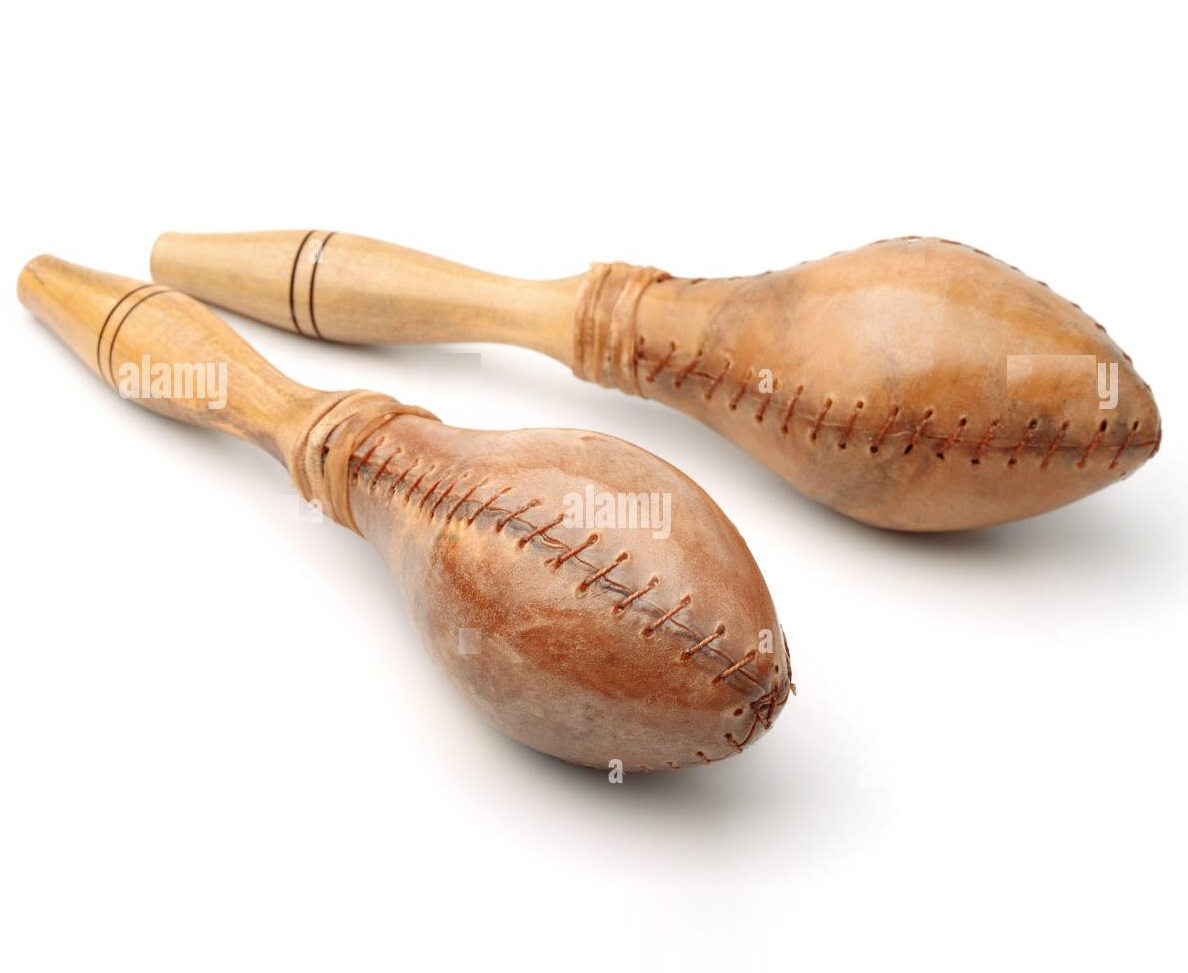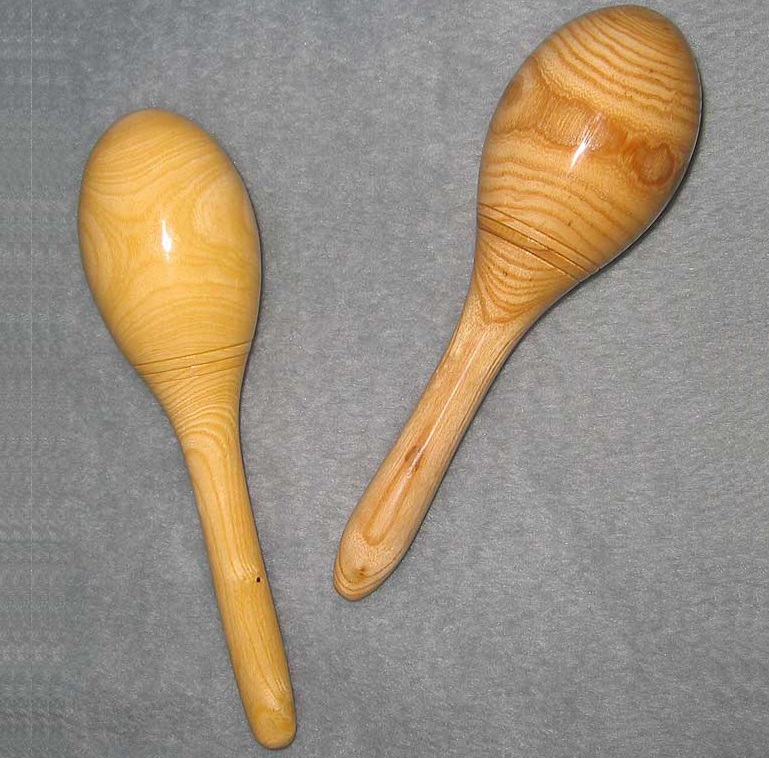Chac-Chac
Percussions
America
Between 1001 and 1900 AD
Video
The Chac-Chac, also known as shak-shak or maraca, is a percussion instrument integral to various musical traditions, particularly in the Caribbean and Latin America. This article delves into its description, classification, history, construction, types, characteristics, sound production, playing methods, roles in music, and cultural significance.
The Chac-Chac is a rattle-like instrument typically played in pairs. Each consists of a hollow vessel filled with small objects such as seeds, pebbles, or beads. When shaken, these contents strike the interior surfaces, producing rhythmic sounds. The instrument is commonly associated with Caribbean and Latin American music genres. Classified as a percussion instrument, the Chac-Chac falls under the category of shaken idiophones. Idiophones are instruments that create sound primarily through the vibration of their own material, without the use of strings or membranes. In the Hornbostel-Sachs system, it is designated as 112.1, indicating shaken idiophones or rattles.
History
The Chac-Chac has deep-rooted origins in indigenous cultures of South America. It is believed to have been used by the Tupinamba people of Brazil as a rattle for divination and healing rituals. The instrument’s presence spans various regions, including the Caribbean islands and parts of Central and South America. Its exact inception date is uncertain, but its use predates European colonization, indicating a history that extends several centuries.
Pre-Columbian Roots in South America
The chac-chac traces its origins to Inca and pre-Inca civilizations in the Andean highlands, where it was known as the *chajcha*. Crafted from dried alpaca or llama hooves strung on cloth strips, it played a sacred role in rituals and shamanic practices. Indigenous communities believed its sound could ward off malevolent spirits and invoke ancestral blessings.
Colonial Influence and Global Diffusion
During the colonial era, the instrument spread to the Caribbean through trade and cultural exchange. In Trinidad and Tobago, it became integral to *parang* music—a festive genre blending Spanish, Indigenous, and African influences. European colonization also introduced new materials, leading to variations like the calabash-based *shak-shak*.
Construction
Traditionally, Chac-Chacs are crafted from dried gourds. The process involves hollowing out the gourd, filling it with rattling materials like seeds or pebbles, and attaching a handle for ease of use. In some cultures, the exterior is adorned with feathers or human hair, and a slit may be cut to represent a mouth, enhancing its symbolic significance. Modern variations may utilize materials such as wood, leather, or plastic, but the fundamental design remains consistent.
Types
While the basic structure of the Chac-Chac is uniform, variations exist based on cultural practices and available materials. For instance, in some regions, the instrument is made entirely of wood, while in others, it retains the traditional gourd construction. The size, shape, and filling materials can also vary, influencing the sound produced.
Characteristics
The Chac-Chac is characterized by its simple yet effective design. It is lightweight, portable, and easy to play, making it accessible to musicians of all skill levels. The sound it produces is sharp and rhythmic, capable of cutting through other instruments in an ensemble. Its timbre can be adjusted by altering the size of the gourd or the type and quantity of the filling material.
Sound Production
Sound is produced by shaking the Chac-Chac, causing the internal contents to strike the inner walls of the hollow vessel. The frequency and intensity of the shaking determine the rhythm and volume of the sound. The material of the vessel and the type of filling contribute to the tonal quality, allowing for a range of sounds from soft and subtle to loud and pronounced.
Playing Methods
Typically, the Chac-Chac is played in pairs, with one held in each hand. The player shakes them in various patterns to create rhythmic accompaniments. Techniques can range from simple back-and-forth motions to more complex rhythms involving alternating hands and varying the force of the shake. Mastery of the instrument involves precise control over these movements to maintain consistent timing and dynamics.
Roles in Music
In musical ensembles, the Chac-Chac serves primarily as a rhythm instrument, providing a steady beat or accentuating specific rhythmic patterns. It is prevalent in genres such as calypso, salsa, and other Latin American and Caribbean styles. Its bright, percussive sound complements other instruments, enhancing the overall texture of the music.
Cultural Significance
Beyond its musical applications, the Chac-Chac holds cultural importance in various societies. In indigenous South American cultures, it was used in rituals and ceremonies, often symbolizing communication with spiritual entities. Today, it remains a symbol of cultural identity in many Caribbean and Latin American communities, representing a link to ancestral traditions and the enduring power of music in cultural expression.
The Chac-Chac is a testament to the ingenuity of early instrument makers and the enduring appeal of simple yet versatile musical tools. Its rich history, cultural significance, and distinctive sound continue to make it a cherished component of musical traditions around the world.
FAQ
What are the different types of Chac-chac?
Chac-chac, also known as maracas, come in various types based on materials like wood, leather, or plastic. Traditional ones use dried gourds with seeds inside. Modern versions may have synthetic shells for durability. The sound varies depending on the filling and shell material.
Who typically uses the Chac-chac?
The Chac-chac is commonly used by musicians in Caribbean, Latin American, and Indigenous music traditions. It is played by both professional and folk musicians in genres like calypso and salsa. Children and beginners also use it due to its simple playing technique. Percussionists in orchestras sometimes use it for rhythm effects.
What is the Chac-chac used for?
The Chac-chac is mainly used for creating rhythmic patterns in music. It adds a distinctive shaking sound to Latin, Caribbean, and folk performances. The instrument is also used in ceremonial and cultural dances. In education, it helps teach rhythm to beginners.
 Links
Links
References
- Chajcha Chac-Chac: An Ancient Andean Percussion Instrument
- Maracas in Caribbean and Latin Music: A Historical Perspective
- The Role of the Chac-Chac in Trinidadian Parang Music
- Crafting Traditional Chac-Chacs: Materials and Methods
- Hornbostel–Sachs Classification of Musical Instruments
- From Ritual to Performance: The Evolution of Percussion Instruments
Other Instrument
Categories



















